Jack In The Pulpit
- March 22, 2024
- 0 comment
The Jack In The Pulpit, scientifically known as Arisaema triphyllum, is a striking woodland plant native to eastern North America. This unique plant is renowned for its distinctive appearance and ecological significance. It typically grows 1-2 feet tall and features a spadix or ‘Jack’ with a columnar form enclosed by a sheath called a spathe or ‘pulpit’. What makes this plant fascinating is its ability to change gender, starting with male flowers that transition to hermaphroditic as they mature.


Jack In The Pulpit blooms from March to April, displaying a club-like spadix with tiny flowers at the base, often green or purple hooded and marked with stripes. Its presence in forests, moist woods, and along creeks adds to its allure, attracting pollinators like flies and gnats while deterring wildlife due to its toxicity. This plant’s unique characteristics and role in its ecosystem make it a captivating feature of the eastern U.S. woodlands.
Characteristics of Jack In The Pulpit
| Characteristics | Description |
| Scientific Name | Arisaema triphyllum |
| Common Names | Jack In The Pulpit, Indian Turnip, Bog Onion |
| Family | Araceae |
| Native Region | Eastern North America |
| Plant Type | Herbaceous perennial |
| Size | Typically grows to a height of 1-2 feet |
| Leaves | Consist of three leaflets, similar in appearance to those of the poison ivy plant |
| Flowers | The inflorescence is a distinctive hooded spathe surrounding a central spadix, giving the appearance of a preacher in a pulpit, hence the name “Jack In The Pulpit” |
| Propagation | Primarily through corm division and seed propagation |
| Drought Tolerance | Moderate drought tolerance |
| Cultural Uses | Historically used by Native American tribes for medicinal and ceremonial purposes |
| Ecological Role | Provides food for pollinators and small fruit-eating animals |
| Notable Species | Arisaema dracontium (Green Dragon), Arisaema sikokianum (Japanese Cobra Lily) |
| Hardiness Zones | Typically grows in USDA hardiness zones 4-9 |
| Growth Rate | Moderate |
| Lifespan | Long-lived perennial |
Botanical Beauty of “Jack In The Pulpit”
Celebrated for its striking floral architecture, Jack In The Pulpit captivates the eye with its enigmatic bloom, emerging as a beacon of botanical beauty within its woodland domicile. This woodland wildflower, scientifically known as Arisaema triphyllum, boasts a unique green and burgundy striped hood that conceals a spadix adorned with tiny green to purple flowers.
Its intriguing transformation from male to hermaphroditic flowers adds to its allure, attracting small flies and gnats as pollinators. The plant’s ability to change gender from year to year further enhances its mystique, making it a fascinating feature of the eastern U.S. woodlands.
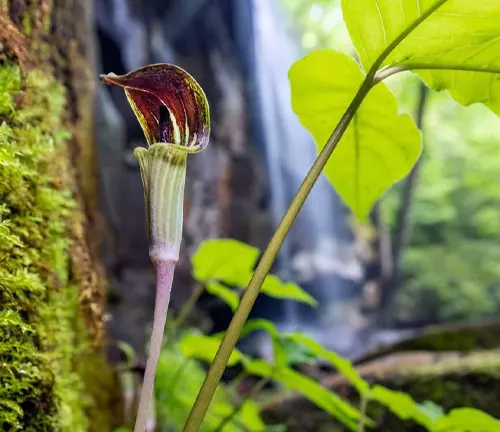

Woodland Elegance
The Jack In The Pulpit is revered for its elegant and mysterious appearance, making it a captivating addition to woodland gardens and naturalistic landscapes. This woodland wildflower, scientifically known as Arisaema triphyllum, features a unique green and burgundy striped hood that conceals a spadix adorned with tiny green to purple flowers.
Its ability to change gender from male to hermaphroditic flowers adds to its allure, attracting pollinators like flies and gnats. This plant’s distinctive beauty and ecological significance make it a sought-after feature in the eastern U.S. woodlands.
Ecological Importance
The Jack-in-the-Pulpit, scientifically known as Arisaema triphyllum, plays a crucial role in woodland ecosystems by providing food and habitat for various wildlife, contributing to the overall biodiversity of its native regions.
This unique plant’s ability to switch gender from year to year and its intricate pollination method involving fungus gnats highlight its ecological significance.
Additionally, the bright red berries produced by pollinated female plants serve as a food source for birds and mammals, further emphasizing the plant’s importance in supporting local wildlife populations.
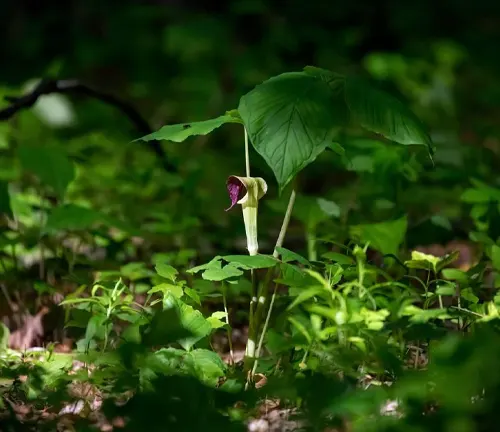

Cultivation and Conservation
Due to habitat loss and over-harvesting, some species of Arisaema, like the Jack-in-the-Pulpit (Arisaema triphyllum), are considered threatened or endangered. Conservation efforts are crucial to preserving their natural habitats and ensuring their sustainable cultivation. By protecting these unique woodland plants and their ecosystems, we can safeguard their biodiversity and ecological significance for future generations.
Fragrance
While the Jack-in-the-Pulpit (Arisaema triphyllum) does not possess a noticeable fragrance, its unique appearance and ecological value make it a prized addition to naturalistic plantings. This woodland wildflower, native to eastern North America, features a striking green and burgundy striped hood that conceals a spadix covered in tiny green to purple flowers.
Despite its lack of fragrance, the plant’s ability to change gender from male to hermaphroditic flowers, its role in supporting local wildlife populations, and the cluster of bright red berries it produces in late summer all contribute to its allure. Jack-in-the-Pulpit is relatively easy to grow in rich, shady soils, requiring minimal care beyond a thick layer of leaves for winter protection.
Its presence in woodlands adds a touch of elegance and ecological significance, making it a fascinating and valuable component of natural habitats.
Soil Stabilization
The extensive root system of Jack In The Pulpit, scientifically known as Arisaema triphyllum, plays a vital role in soil stabilization, effectively reducing erosion in woodland areas. This unique woodland plant, native to eastern North America, thrives in sandy loam to clay soils rich in organic matter, making it well-suited for maintaining soil integrity.
By anchoring itself firmly in the ground, Jack In The Pulpit helps prevent soil erosion, particularly in moist woodland environments where it prefers to grow. Its ability to adapt to various soil types and contribute to soil stability underscores its ecological importance in maintaining the health of woodland ecosystems.
Common Uses
Jack-in-the-Pulpit, scientifically known as Arisaema triphyllum, serves various common uses, making it a versatile and valuable plant in different contexts. In ornamental gardening, this woodland wildflower is prized for its unique appearance, with a green and brown striped hood concealing a spadix adorned with tiny green to purple flowers.
Its distinctive features make it a sought-after addition to gardens, adding a touch of natural beauty and intrigue. Ethnobotanical research reveals that Native Americans historically used the roots of Jack-in-the-Pulpit for medicinal purposes, particularly for eye and respiratory conditions, showcasing the plant’s cultural and historical significance.
Furthermore, in wildlife gardening and conservation efforts, Jack-in-the-Pulpit plays a crucial role in supporting local biodiversity by providing food and habitat for various wildlife species, emphasizing its ecological importance in preserving natural ecosystems.
Benefits
Jack-in-the-Pulpit, scientifically known as Arisaema triphyllum, offers a range of benefits that make it a valuable addition to woodland environments. This unique plant adds a touch of wild elegance to woodland gardens with its striking green and burgundy striped hood, making it a visually captivating feature.
Beyond its aesthetic appeal, Jack-in-the-Pulpit plays a crucial role in supporting biodiversity and ecological balance by providing food and habitat for various wildlife species. Additionally, its historical use in ethnobotanical research highlights its potential for medicinal applications, showcasing the plant’s cultural and medicinal significance throughout history.
Overall, Jack-in-the-Pulpit stands out as a multifaceted plant that not only enhances the beauty of natural landscapes but also contributes to the health and sustainability of woodland ecosystems.
Different Species
Arisaema triphyllum (Jack In The Pulpit)
This is the most well-known species, recognized for its distinctive hooded spathe and central spadix, resembling a preacher in a pulpit. It is native to eastern North America and is a popular choice for woodland gardens.
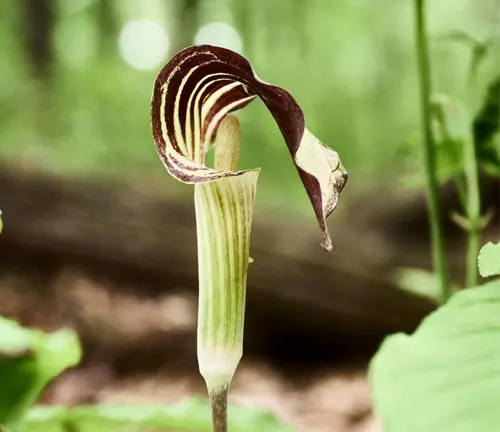

Arisaema dracontium (Green Dragon)
Known for its green, dragon-shaped hooded spathe, this species is native to eastern North America. It is an intriguing addition to woodland landscapes and shares similar cultural and ecological significance with Arisaema triphyllum.
Arisaema sikokianum (Japanese Cobra Lily)
This species is native to Japan and is admired for its dramatic, striped spathe and long, whip-like spadix. It is highly prized in horticulture for its ornamental value and unique appearance.
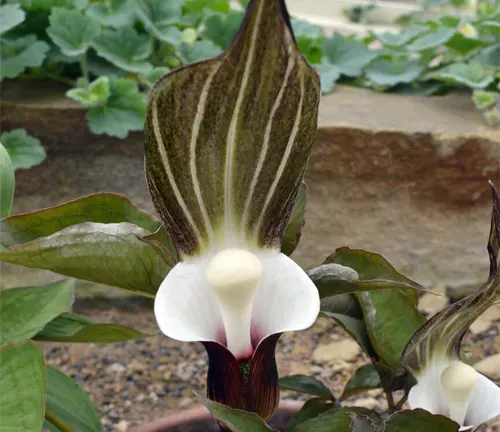

Arisaema costatum
Native to Asia, Arisaema costatum is recognized for its elongated, ribbed spathe and central spadix. It is valued for its ornamental appeal and contributes to the diversity of the Arisaema genus.
Arisaema tortuosum
Also known as the Whipcord Cobra Lily, this species is native to the Himalayas. It features a distinctive, coiled spathe and is esteemed for its exotic appearance and suitability for shaded gardens.

Frequently Asked Questions (FAQs)
1. What is Jack In The Pulpit?
Jack In The Pulpit (Arisaema triphyllum) is a perennial woodland plant native to eastern North America. It’s known for its unique floral structure, a spadix (Jack) encased by a spathe (pulpit), and its ability to change gender from male to hermaphroditic as it matures.
2. Where can Jack In The Pulpit be found?
It thrives in moist, shaded woodlands, often along creeks or in forests across eastern North America. Its preferred habitat includes rich, well-drained soil in part to full shade.
3. How does Jack In The Pulpit reproduce?
Jack In The Pulpit primarily reproduces through corm division and seed propagation. It starts as a male plant and can become hermaphroditic over time, allowing for self-pollination or cross-pollination by attracting flies and gnats.
4. Is Jack In The Pulpit toxic?
Yes, all parts of the plant contain calcium oxalate crystals, making it toxic if ingested. The plant uses this as a defense mechanism to deter wildlife from consuming it.
5. Can Jack In The Pulpit be used in gardens?
Absolutely, Jack In The Pulpit makes a captivating addition to shade or woodland gardens due to its unique appearance and ecological benefits. It should be planted in moist, organic-rich soil and kept in shaded areas to mimic its natural habitat.
6. What ecological role does Jack In The Pulpit play?
It provides food for pollinators like flies and gnats during its flowering period. Additionally, the bright red berries it produces are a food source for birds and small mammals, contributing to local biodiversity.
7. How does Jack In The Pulpit contribute to soil stabilization?
Its extensive root system helps anchor soil, reducing erosion in its native woodland habitats. This makes it beneficial for ecological restoration projects and natural landscaping.
8. Are there any medicinal uses for Jack In The Pulpit?
Historically, Native Americans used the plant for medicinal purposes, including treatments for sore eyes and respiratory issues. However, due to its toxicity, it should be handled with care and used for medicinal purposes only under expert guidance.
9. What is the lifespan of a Jack In The Pulpit plant?
Jack In The Pulpit is a long-lived perennial. With the right conditions and care, it can survive and thrive in a garden or natural setting for many years, contributing to the ecosystem throughout its life.
10. Are there different species of Jack In The Pulpit?
Yes, the Arisaema genus includes several species, such as Arisaema dracontium (Green Dragon) and Arisaema sikokianum (Japanese Cobra Lily), each with unique characteristics. These species vary in appearance but share similar ecological roles and cultural significances.



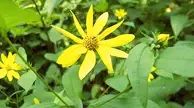
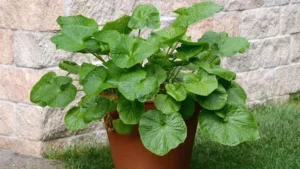
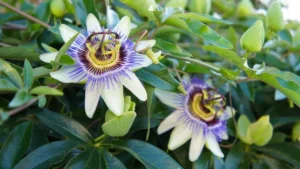


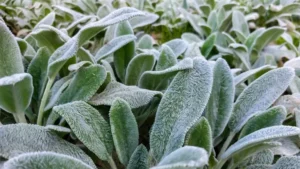

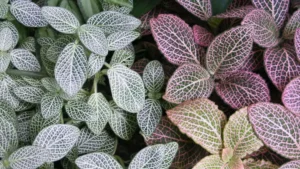
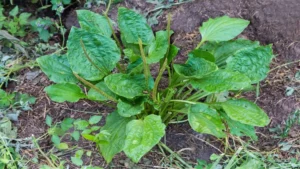
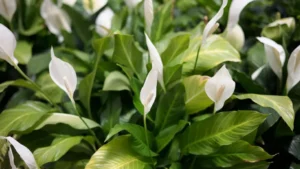
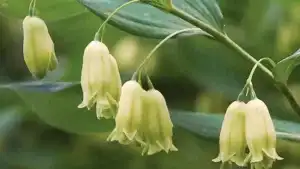
Leave your comment